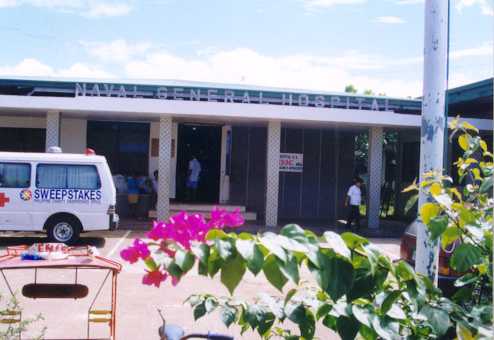 (Photo courtesy of the Biliran Provincial Government.) Cluster Survey in Biliran Province Executive
Summary A Multi-Indicator Cluster Survey (MICS) was conducted in the Province of Biliran during the last two weeks of September 1999. The survey was sponsored by the Local Government Unit Performance Program (LPP) of the Department of Health, through the supervision of the Provincial Government of Biliran. MICS seeks to generate accurate and up-to-date information on the health service performance of the LGU along the following indicators: Contraceptive Prevalence, Fully Immunized Child Coverage, Tetanus Toxoid Protection, Vitamin A Coverage, Iodized Salt Utilization, and ARI/CDD Coverage. Sixty-two (62) clusters covering 57 barangays of the eight (8) municipalities of Biliran Province were randomly selected using the probability proportionate to size (PPS) technique. In every cluster, fifteen (15) women respondents per indicator were chosen using specific criteria. Questions regarding contraceptive use were asked from women of reproductive age regardless of civil status. Mothers with children aged 12-23 months old served as respondents to determine FIC (fully immunized child) coverage. Mothers with children aged 0-23 months were asked about their latest pregnancy to determine the extent of pre-natal care received, including micro-nutrient supplementation and protection of their neonates against tetanus. Mothers with children aged 18-59 months old served as respondents to determine Vitamin A coverage and use of iodized salt. And mothers with children less than 5 years old were asked questions related to ARI/CDD (acute respiratory infection and control of diarrheal diseases). The findings of the study showed that more than half (51.8 percent) of the currently married women in Biliran Province use contraceptive methods. Of these, 33.6 percent use modern methods while 18.2 percent use traditional methods. This contraceptive prevalence rate (CPR) is slightly higher than the national CPR for 1997 (47.0 percent). The pill leads the other contraceptives in terms of use. At the time of the survey, 116 women were found pregnant. Of these, 46.6 percent wanted their current state of pregnancy, 37.1 percent wanted it later, and 14.6 percent did not like it at all. The women who wanted to either space or limit their pregnancies, including those not using any contraceptive method, represent the group with "unmet need" for Family Planning (FP) services. On the whole, an increased demand for FP services (82.5 percent) was noted. Regarding maternal care, 96 percent of the mothers interviewed were given pre-natal care mostly provided by the midwife (82.2 percent) in the locality. However, majority of them sought initial pre-natal care on the second trimester onwards. Ideally, the first pre-natal visit should be made as soon as pregnancy is known. But only 6.2 percent of the mothers had their initial pre-natal care during the first trimester. Pregnant mothers were inadequately supplied with iron tablets, with only 3.4 percent of them receiving the ideal "more than 100 tablets." As far as the TT2 Plus (two doses of tetanus toxoid immunization or more) immunization is concerned, the 84.4 percent coverage for Biliran Province exceeded the national target of 80 percent. This also supports the finding that 77.7 percent of the targeted children were protected at birth against neonatal tetanus. The FIC (fully immunized child) coverage, at 85.2 percent, is slightly lower compared to the national target of 90 percent. A significant 12.8 percent of the children either had no or incomplete immunization. Vitamin A supplementation covered 92.5 percent of the 18-59 months old children, given almost exclusively (96.6 percent) by the Rural Health Units (through their barangay-based Patak Centers). Those who were not able to avail of it gave reasons of unavailability and "poor motivation" (i.e., busy, health center too far). A high percentage (87.6 percent) of the respondents expressed awareness of the value of using iodized salt. However, the utilization rate is very low (12.4 percent). Also, the benefits of using iodized salt are not well known, except for goiter prevention (61.7 percent). Of the 574 children who had cough, 214 (37.3 percent) were considered to have suffered from Acute Respiratory Infection (ARI) within the last six months (prior to the survey). Only 79 percent of the cases sought advice or treatment, mostly from the RHU. Alarmingly, 50.6 percent of the respondents showed inadequate information about the essential signs that will necessitate immediate assistance from health workers. The incidence of diarrhea may seem low at 9.6 percent, but its proper home management is essential to prevent dehydration, which is the most common cause of mortality in rural communities. Only a few of the respondents practice giving more food (30.6 percent) and drinks (38.7 percent), including breastfeeding during diarrhea episodes. This is further aggravated by the fact that the essential signs that would need immediate assistance from a health worker are not well known by the respondents.
|
. |